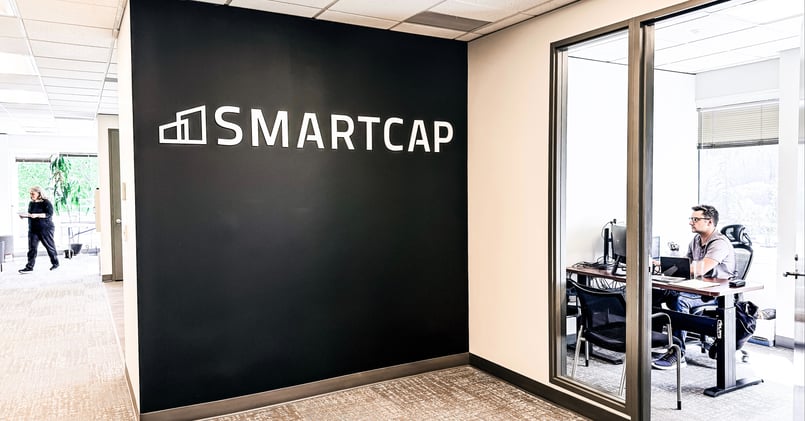
In the ever-evolving landscape of modern workplaces, office space design has undergone a remarkable transformation over the past few decades. Gone are the days of cubicles and isolated workstations, as businesses recognize the importance of creating dynamic, engaging, and employee-centric environments. This shift towards more innovative and adaptable office designs has brought forth several key trends, including the embrace of open spaces, the integration of sustainability through green buildings, and the proliferation of coworking spaces. In this article, we will delve into these trends and explore how they are shaping the way we work and the future of office design.
The Rise of Open Spaces
One of the most noticeable trends in office space design is the shift towards open spaces. Gone are the days when employees were confined to cubicles or private offices. Instead, organizations are increasingly embracing open layouts that foster collaboration, creativity, and a sense of community among employees.
Benefits of Open Spaces:
- Enhanced Collaboration: Open spaces encourage spontaneous interactions among team members, leading to increased collaboration and knowledge sharing. Employees find it easier to approach colleagues for quick discussions or brainstorming sessions.
- Improved Communication: Removing physical barriers fosters better communication between departments and teams. This can lead to a more agile and responsive organization.
- Flexibility: Open spaces can be easily reconfigured to accommodate changing needs. Furniture and partition walls can be moved to create different workspaces, promoting adaptability.
- Cost-Efficiency: Open spaces often require less square footage per employee, which can lead to significant cost savings in terms of real estate expenses.
However, it's crucial to strike a balance between open and private spaces. While open layouts promote collaboration, they can also be noisy and distracting. Incorporating quiet zones and private areas where employees can focus is essential.
The Green Building Revolution
As the world grapples with environmental concerns, businesses are increasingly incorporating sustainability into their office space designs. Green building practices have gained traction as organizations aim to reduce their carbon footprint and create healthier work environments.
Key Aspects of Green Buildings:
- Energy Efficiency: Green buildings prioritize energy-efficient lighting, HVAC systems, and insulation. This not only reduces operating costs but also minimizes environmental impact.
- Natural Light and Ventilation: Maximizing natural light and ventilation not only reduces the need for artificial lighting and heating but also enhances employee well-being.
- Use of Sustainable Materials: Employing sustainable materials like recycled wood, low-VOC paint, and eco-friendly furnishings reduces waste and promotes a healthier indoor environment.
- Green Certifications: Many organizations seek green building certifications such as LEED (Leadership in Energy and Environmental Design) to demonstrate their commitment to sustainability.
Green office spaces have several advantages, including improved employee health, productivity, and retention. Employees working in green environments tend to experience fewer sick days, increased job satisfaction, and a greater sense of purpose.
The Flourishing of Coworking Spaces
The concept of coworking spaces has disrupted traditional office space design in recent years. These shared workspaces have become popular among freelancers, startups, and even established businesses seeking flexible and cost-effective solutions.
Benefits of Coworking Spaces:
- Flexibility: Coworking spaces offer short-term leases and flexible memberships, allowing businesses to scale up or down as needed without the commitment of long-term leases.
- Community: Coworking spaces provide a sense of community and networking opportunities. They foster connections among individuals from diverse backgrounds and industries.
- Amenities: Many coworking spaces offer amenities such as high-speed internet, meeting rooms, and kitchen facilities, making them an attractive option for professionals seeking a fully-equipped workspace.
- Cost Savings: For startups and freelancers, coworking spaces eliminate the need for investing in and maintaining office infrastructure, which can be a significant cost saver.
As coworking spaces continue to gain popularity, traditional office spaces are evolving to incorporate some of these flexible features. Many larger organizations are setting up satellite offices within coworking spaces to tap into the benefits of flexibility and community.
The Hybrid Office Model
With the advent of remote work and the lessons learned from the COVID-19 pandemic, the office design landscape has further evolved towards a hybrid model. Businesses are reimagining their office spaces to accommodate a mix of in-person and remote work.
Features of the Hybrid Office:
- Flexible Seating: Offices are incorporating flexible seating arrangements that accommodate both in-office and remote workers on different days.
- Advanced Technology: The integration of advanced technology, such as video conferencing and collaboration tools, enables seamless communication between in-office and remote teams.
- Activity-Based Workspaces: Designing offices with activity-based workspaces allows employees to choose the environment that best suits their task, whether it's quiet, collaborative, or focused work.
- Wellness and Employee Well-Being: The hybrid office model places greater emphasis on employee well-being by incorporating wellness rooms, relaxation areas, and mental health support.
In this evolving landscape, businesses are recognizing that the office is no longer just a place to work but a hub for connection, collaboration, and culture.
The Future of Office Space Design
As we look ahead, the trends in office space design are expected to continue evolving. Sustainability will play an even more significant role as organizations strive to reduce their environmental impact. The integration of advanced technology will further enhance remote and hybrid work capabilities. Flexibility and adaptability will remain key as businesses seek to create dynamic and employee-centric work environments.
In conclusion, the evolution of office space design is a reflection of changing work dynamics, employee expectations, and societal shifts. The embrace of open spaces, the commitment to sustainability, the proliferation of coworking spaces, and the emergence of hybrid office models all contribute to creating more agile, innovative, and engaging workplaces. As businesses navigate these trends, they have the opportunity to not only enhance productivity but also attract and retain top talent in an ever-competitive job market.
TAGS: Musings
